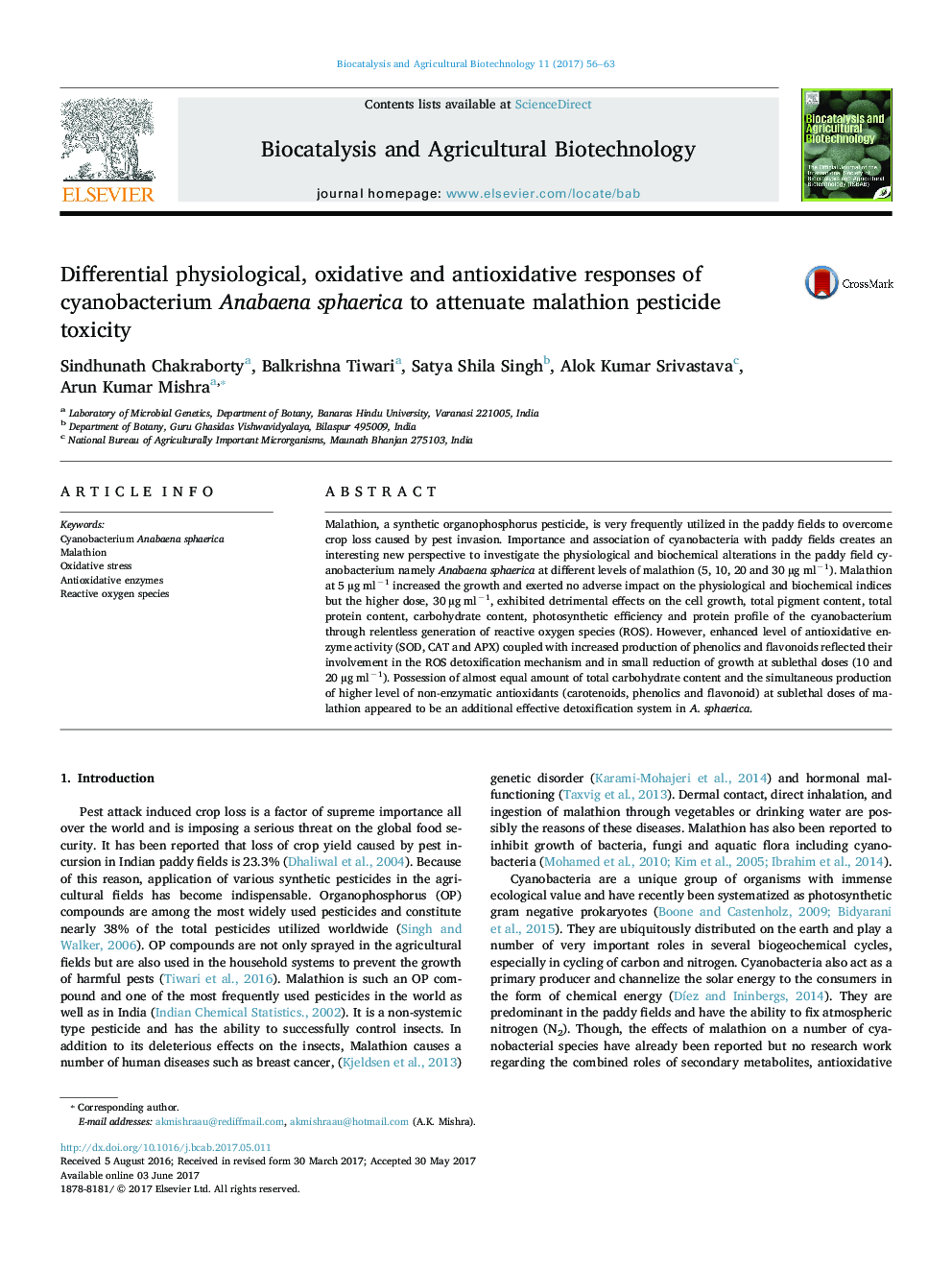| Article ID | Journal | Published Year | Pages | File Type |
|---|---|---|---|---|
| 5520505 | Biocatalysis and Agricultural Biotechnology | 2017 | 8 Pages |
Malathion, a synthetic organophosphorus pesticide, is very frequently utilized in the paddy fields to overcome crop loss caused by pest invasion. Importance and association of cyanobacteria with paddy fields creates an interesting new perspective to investigate the physiological and biochemical alterations in the paddy field cyanobacterium namely Anabaena sphaerica at different levels of malathion (5, 10, 20 and 30 µg mlâ1). Malathion at 5 µg mlâ1 increased the growth and exerted no adverse impact on the physiological and biochemical indices but the higher dose, 30 µg mlâ1, exhibited detrimental effects on the cell growth, total pigment content, total protein content, carbohydrate content, photosynthetic efficiency and protein profile of the cyanobacterium through relentless generation of reactive oxygen species (ROS). However, enhanced level of antioxidative enzyme activity (SOD, CAT and APX) coupled with increased production of phenolics and flavonoids reflected their involvement in the ROS detoxification mechanism and in small reduction of growth at sublethal doses (10 and 20 µg mlâ1). Possession of almost equal amount of total carbohydrate content and the simultaneous production of higher level of non-enzymatic antioxidants (carotenoids, phenolics and flavonoid) at sublethal doses of malathion appeared to be an additional effective detoxification system in A. sphaerica.
